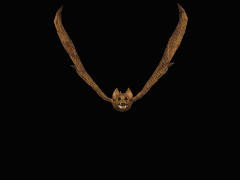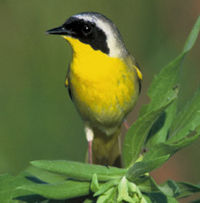


|
Parulidae:
The New World warblers or wood-warblers are a group of small often colourful passerine birds restricted to the New World. They are not related to the Old World warblers (Sylviidae) or the Australian warblers. Most are arboreal, but some, like the Ovenbird and the two waterthrushes, are more terrestrial. Most members of this family are insectivores. Many migratory species, particularly those breeding further north, have distinctive male plumage at least in the breeding seaon, since males need to reclaim territory and advertise for mates each year. This tendency is particularly marked in the large genus Dendroica. In contrast, resident tropical species, which pair for life, show little if any sexual dimorphism. The migratory species tend to lay larger clutches of eggs, typically up to six, since the hazards of their journeys mean that many individuals will have only one chance to breed. In contrast, two eggs is typical for many tropical species, since the chicks can be provided with better care, and the adults are likely to have further opportunities for reproduction. |
